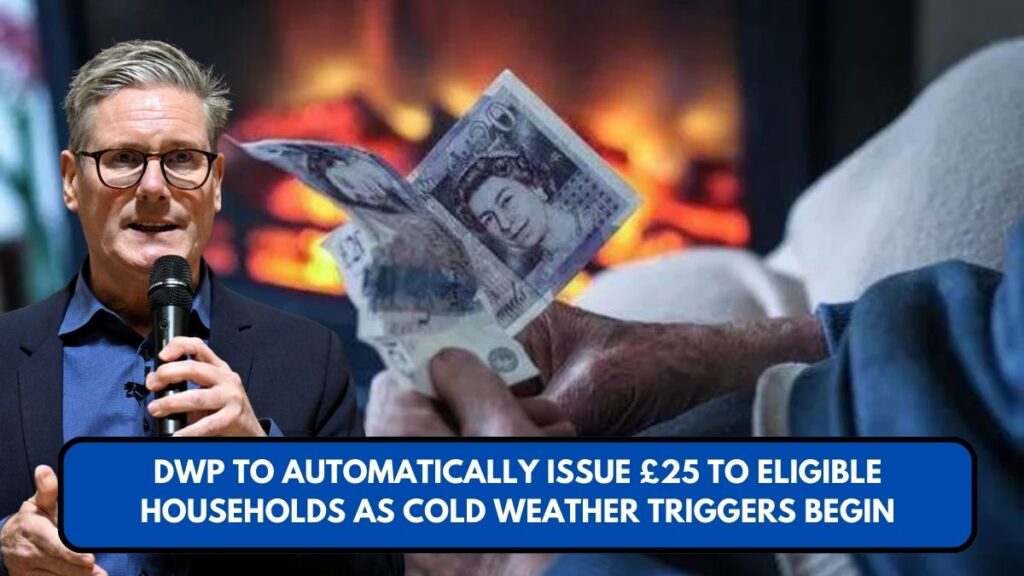As temperatures begin to drop across the UK, the Department for Work and Pensions (DWP) has issued a vital update on the Cold Weather Payment scheme for Winter 2024–2025. This scheme is designed to support low-income and vulnerable households in England, Wales, and Northern Ireland during severe cold spells.
What Are Cold Weather Payments?
Cold Weather Payments are government-provided financial aid for individuals receiving certain benefits. The payments are meant to help cover increased heating costs during periods of extreme cold.
The scheme runs annually from 1 November to 31 March. If the average temperature in your area is recorded or forecast to be 0°C or below for seven consecutive days, you will receive £25 per 7-day period of cold weather.
The payments are automatically issued, meaning eligible claimants don’t need to apply. They are paid into the same bank account where benefit payments are usually deposited.

Who Is Eligible?
You may be eligible for Cold Weather Payments if you receive any of the following benefits:
- Pension Credit (Guaranteed Credit element)
- Income Support
- Income-based Jobseeker’s Allowance (JSA)
- Income-related Employment and Support Allowance (ESA)
- Universal Credit (in some cases, such as if you have a child under 5, or cannot work due to health conditions)
- Support for Mortgage Interest (SMI)
Eligibility can depend on individual circumstances, including whether you have a disabled child, receive disability premiums, or are responsible for a child under the age of 5.
Regional Differences
While England, Wales, and Northern Ireland operate under the Cold Weather Payment scheme, Scotland has replaced the scheme with a Winter Heating Payment.
- In Scotland, eligible households receive a flat-rate £50 payment, regardless of temperature. This is issued automatically between December and February.
More about the Scottish Winter Heating Payment is available on mygov.scot.
In Northern Ireland, the Cold Weather Payment scheme continues in the same way as in England and Wales.
How to Check if Your Area Qualifies
The DWP provides an online postcode checker where individuals can find out whether a payment has been triggered in their location. This tool is updated daily and reflects temperature readings from weather stations across the UK.
Estimated Impact for Winter 2024–2025
The DWP has released statistical estimates for the number of eligible individuals expected to receive payments this winter. These estimates are based on benefits data from the previous year and will be updated as cold weather events occur.

Additional Support Options
Households struggling with rising energy costs this winter can also explore additional assistance programs, including:
- Warm Home Discount Scheme: Provides £150 off electricity bills for eligible households.
- Household Support Fund: Local councils offer emergency support for essentials such as food and energy. Details are available from individual local authority websites.
- Energy Company Grants: Some suppliers, including British Gas and EDF, offer grants to help clear energy debts. Check MoneySavingExpert’s grant list for updated options.
Summary
The DWP’s Cold Weather Payment scheme remains a lifeline for many during the harsh UK winters. With automatic disbursement, expanded eligibility, and clear government tools for checking status, the support system is robust and accessible. However, it’s important that claimants ensure their benefit details are up to date to avoid delays in receiving payments.
This article has been carefully fact-checked by our editorial team to ensure accuracy and eliminate any misleading information. We are committed to maintaining the highest standards of integrity in our content.

Himanshu Sharma writes for Weekend Spy, focusing on recruitment, government schemes, and current affairs. He is dedicated to making complex information accessible to readers.
Himanshu enjoys playing chess, hiking, and trying new recipes, always seeking ways to combine his love for writing with his passion for exploration. Connect with Drop him an email at [email protected].







